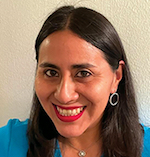 Michelle Abril Michelle Abril |
Any public relations professional worth their paycheck understands the importance of reading. We read to stay current on travel trends, look for new writers to engage and monitor clients and competitors. Everyone has their preference on how they read, whether scrolling away on smartphones or tablets, going old-school and cracking open a magazine or wearing newspaper ink stains with pride. But the way we’re reading and what we’re reading has drastically changed, given the major shift in today’s print and online media landscape.
Last year, some of the most-beloved magazines ceased print issues in exchange for full online operations, including Allure, Parents and People en Español, while others folded completely. Newspapers are also phasing out hardcopies and transitioning to digital-only content. In addition, news outlets are cutting staff—Vox Media laid off 130 employees—and some publications have discontinued day-of news coverage, such as Thrillist, which cut food and drink news from its site. It begs the question for the communications industry whether we’ll even have on-staff journalists to pitch in the future.
Travel publicists must be nimble, think beyond the glossy magazine and look to other mediums to generate client news. As the media continues to evolve, everyone can benefit from looking beyond the gold-standard Travel + Leisure cover story.
| This article is featured in O'Dwyer's July '23 Travel & Tourism PR Magazine (view PDF version) |
Podcasts
According to Spotify, as of 2023, there are 464.7 million podcast listeners and more than four million podcasts globally. It’s predicted that in 2024 there will be around 504.9 million podcast listeners! As a commanding digital medium often focused on specific themes, consider turning to podcasters and their millions of listeners in the same way we once did 50-page magazines distributed to millions of readers. The convenience of capturing consumers hearing your client news and brand messaging at their convenience is a game-changer for brands.
Podcasts are a great way to position clients as thought leaders in the travel industry and share buzz-worthy news. For example, journalist Holly Rubenstein hosts new episodes weekly on The Travel Diaries, which highlights a special guest and their inspiration for wanderlust destinations, while Conde Nast Traveler’s Editor Lale Arikoglu hosts weekly episodes on Women Who Travel, shining a light on women and their most unique travel tales. If you have a client able to provide travel tips, pay attention to Jason Moore’s Zero to Travel, where he and an interviewee provide actionable advice to help listeners travel better and smarter.
Influencers
Thanks to their built-in audience, influencers are instrumental to any travel brand. They’re virtual storytellers whose impact can be easily measured, helping brands push out timely news to meet campaign KPIs. From Instagram and TikTok to Twitter, people consume travel news and trends on these popular platforms, so companies need to leverage this opportunity in an innovative way. Major travel brands like Hilton regularly engage with influencers across platforms as they are dubbed “ambassadors” and produce creative content that hits key messaging and resonates with core audiences in an organic way. For example, Hilton’s 10-minute TikTok went viral as the untraditional video featured the iconic hotel chain heiress Paris Hilton as well as famous creators Chris Olsen, GirlBossTown and KelzWright, challenging viewers to stay to the end for a chance of winning Hilton Honors Points.
Tarte Cosmetics raised awareness for the destination of Dubai with an influencer trip that sent social media and print media into a frenzy. A group of 50 makeup and lifestyle influencers and their plus ones from eight different countries around the world were invited to Dubai for the launch of a new foundation that had them experience the product in a luxurious destination. Not only were consumers talking about Tarte, but the destination collaboration was uncanny, given that brand trips are not typically widely discussed. The hashtag #TarteDubaiTrip has more than 20 million views alone.
Delta Airlines creatively leveraged influencers to launch their #SkyMilesLife microsite DeltaSkyMilesLife.com, which typically would only be trade-focused news. They worked with 14 creators to produce 500 pieces of quality content to use across owned and paid channels that target key audiences with more than 12 million views.
Broadcast
Television has always been one of the most influential and popular media platforms, allowing news to instantly spread visually to millions of consumers. We could qualify for early retirement if we all had a dollar for every time we heard a client name “The Today Show” as a dream placement! Nowadays, organic inclusion in national broadcast segments is a rarity, as heavily branded news tends to lean into integration paid tactics. Still, savvy communicators know that pitching client travel news tied to a bigger social media trend or national holiday increases the chance of getting coveted airtime.
While national broadcast might be a feather in your cap, local broadcast outlets often tend to be easier to secure and equally strategic when it comes to moving the needle with your client’s desired target audience. Local outlets might result in a longer segment that hits all key messaging versus a quick mention on a national outlet, so don’t ignore the smaller regional segments. In addition, if your client is still looking for national coverage, take the local coverage and pitch the same story to the network’s national syndicate, referencing the client’s local appearance on their regional station, and sometimes—if you have the right story—regional networks will get picked up by their syndicate for the evening news.
As PR professionals, we find ourselves in a constant state of navigating a dynamic media landscape, like a ship captain maneuvering through shifting currents. Let’s remember to look toward the horizon and never lose sight of the importance of relationships! Irrespective of the medium, whether it’s a traditional journalist or podcaster, it’s crucial to cultivate connections with individuals who can contribute to promoting your client. Recognize the significance of these relationships, as they have always been important, but now hold an even greater significance in our current climate.
***
Michelle Abril is Vice President at Coyne Public Relations.


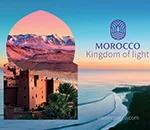 Weber Shandwick is providing PR and marketing communications services to the Moroccan National Tourist Office in New York.
Weber Shandwick is providing PR and marketing communications services to the Moroccan National Tourist Office in New York.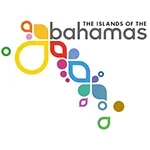 Finn Partners has filed its six-month contract with the Bahamas Ministry of Tourism, Investments & Aviation, which is worth $240K.
Finn Partners has filed its six-month contract with the Bahamas Ministry of Tourism, Investments & Aviation, which is worth $240K.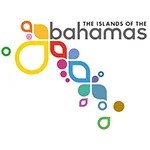 Weber Shandwick wrapped up its work for the Ministry of Bahamas at the end of 2023.
Weber Shandwick wrapped up its work for the Ministry of Bahamas at the end of 2023.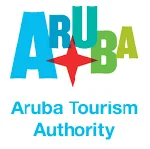 The Aruba Tourism Authority is boosting its budget 29.4 percent to $2.2M at Zeno Group, according to its 2024 contract, effective Jan. 1.
The Aruba Tourism Authority is boosting its budget 29.4 percent to $2.2M at Zeno Group, according to its 2024 contract, effective Jan. 1. As inflation continues to impact spending, consumers are revisiting their list of what they’re willing to spend more of their money on. Luckily for those in the travel industry, experiences seem to be trending up on the “splurge” list.
As inflation continues to impact spending, consumers are revisiting their list of what they’re willing to spend more of their money on. Luckily for those in the travel industry, experiences seem to be trending up on the “splurge” list. 


 Have a comment? Send it to
Have a comment? Send it to 
No comments have been submitted for this story yet.